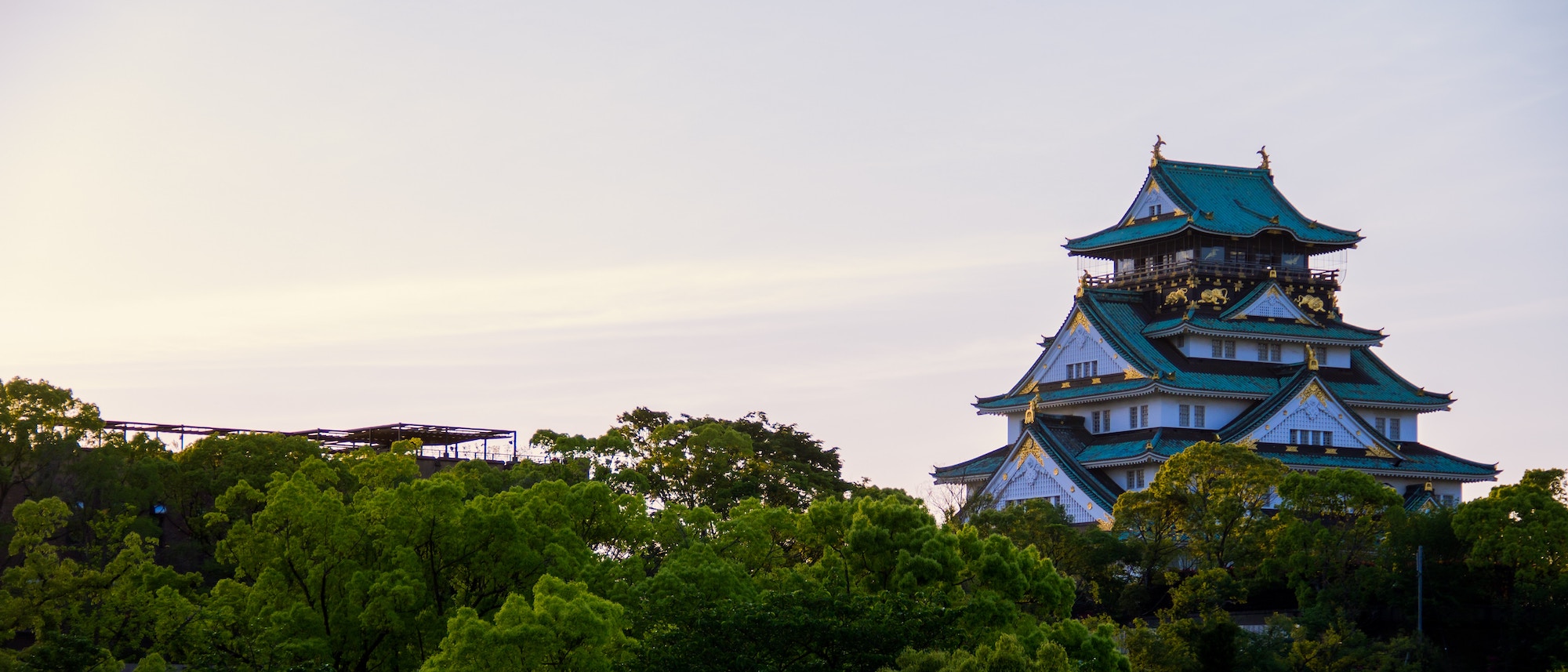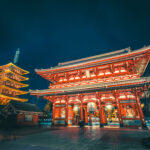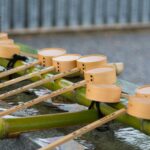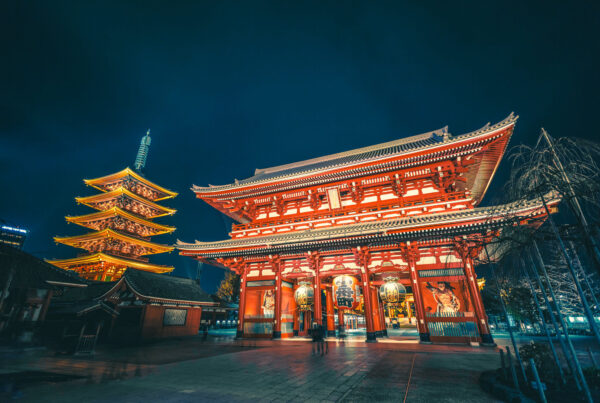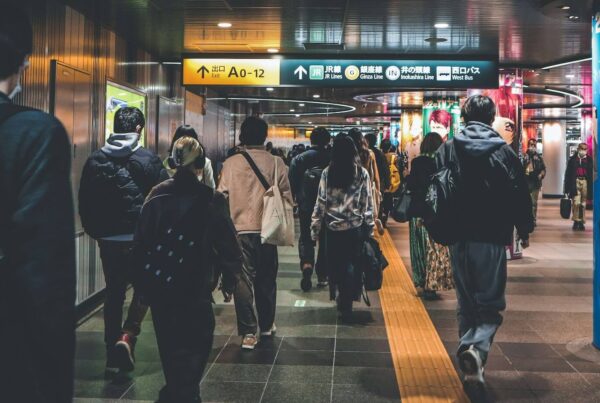Best Japanese Castles – For many years, feudal lords battled each other to conquer lands and settle old feuds – or to claim the ultimate prize: to become Shogun, military ruler of all of Japan. The ornate Japanese castles which these daimyos built to fulfil their ambitions stand as monuments not only to that incredibly bloody past, but also to the rich aesthetic and architectural traditions of Japan – unmissable spots for history buffs and sightseers alike.
Unfortunately, only an estimated 2% of these feudal forts remain. Traditional Japanese construction methods used mostly wood, making temples and castles extremely vulnerable to fires. A tragic reminder of this fact occurred in October 2019, when the 600-year-old Shuri Castle in Okinawa was destroyed by a blaze for the fourth time in its long life.
The 100 which still remain embody the juxtaposition of strength and fragility which makes Japanese castles utterly unique places to visit. Here’s our pick of the best.
Table of Contents
Himeji Castle (Constructed in 1333)
A short walk from Himeji Shinkansen Station in Hyogo prefecture, the White Heron Castle is exemplary of the nature-loving sensibilities which pervade every area of traditional Japanese art. Named for its supposed likeness to a heron taking flight, the castle exudes an aura of grace and peace, with serene gardens and stunning cherry blossom trees.
But don’t be totally fooled. The triangular arrow slits in the walls, and maze-like paths on the approach (intended to disorient and constrict invading armies) betray the less peaceful purpose this fort was built for.
 Not only is this the biggest, and arguably the most beautiful Japanese castle, it’s also the best-preserved. Despite its 700 year history, the castle has miraculously evaded destruction to this day, even during World War 2 when the surrounding area was heavily bombed in Allied air raids. In fact, one bomb did come crashing through the roof of the main tower, but amazingly failed to detonate!
Not only is this the biggest, and arguably the most beautiful Japanese castle, it’s also the best-preserved. Despite its 700 year history, the castle has miraculously evaded destruction to this day, even during World War 2 when the surrounding area was heavily bombed in Allied air raids. In fact, one bomb did come crashing through the roof of the main tower, but amazingly failed to detonate!
The pristine condition of Himeji Castle is not only down to pure dumb luck. The Japanese government recently completed an extensive renovation project which left the outer walls gleaming a fresh and brilliant white, making now a better time than ever to visit.
Easily accessible via Shinkansen from Kyoto or Osaka, don’t leave Japan without checking out this world-famous architectural treasure.
Kumamoto Castle (Constructed in 1607)
For those travelling around Kyushu, the southernmost of Japan’s three main islands, the town of Kumamoto offers a great opportunity for a castle visit. At only 2 hours from Fukuoka, it makes a great day-trip for those flying to or from the city.
While Himeji Castle has enjoyed a relatively peaceful existence, its counterpart In Kumamoto has had a much harder life. Passed between clans, burned to the ground, besieged by rebels for months on end, and heavily damaged by an earthquake in 2016 – this castle has seen it all.

Credits: Masahiko Ohkubo / Flickr
Unfortunately this means that few of the buildings inside are original, but this will hardly seem to matter once you take a look inside the meticulously reconstructed Honamaru Goten Palace, which gives a unique glimpse of the opulence of the lives medieval Japanese high society.
The extensive grounds and number of buildings offer a lot of opportunities for exploration. However, unfortunately much of the grounds are currently deemed unsafe due to the effects of the aforementioned earthquake. Despite this, the main keep can still be viewed from a walkway which is open on Sundays and national holidays.
It’s yet to be announced when the grounds will be fully reopened to the public, so please make sure to check the official website before making the trip to visit here. Until that day, there is still plenty to left to admire in the palace, walls, and surrounding town.
Osaka Castle (Constructed in 1580)
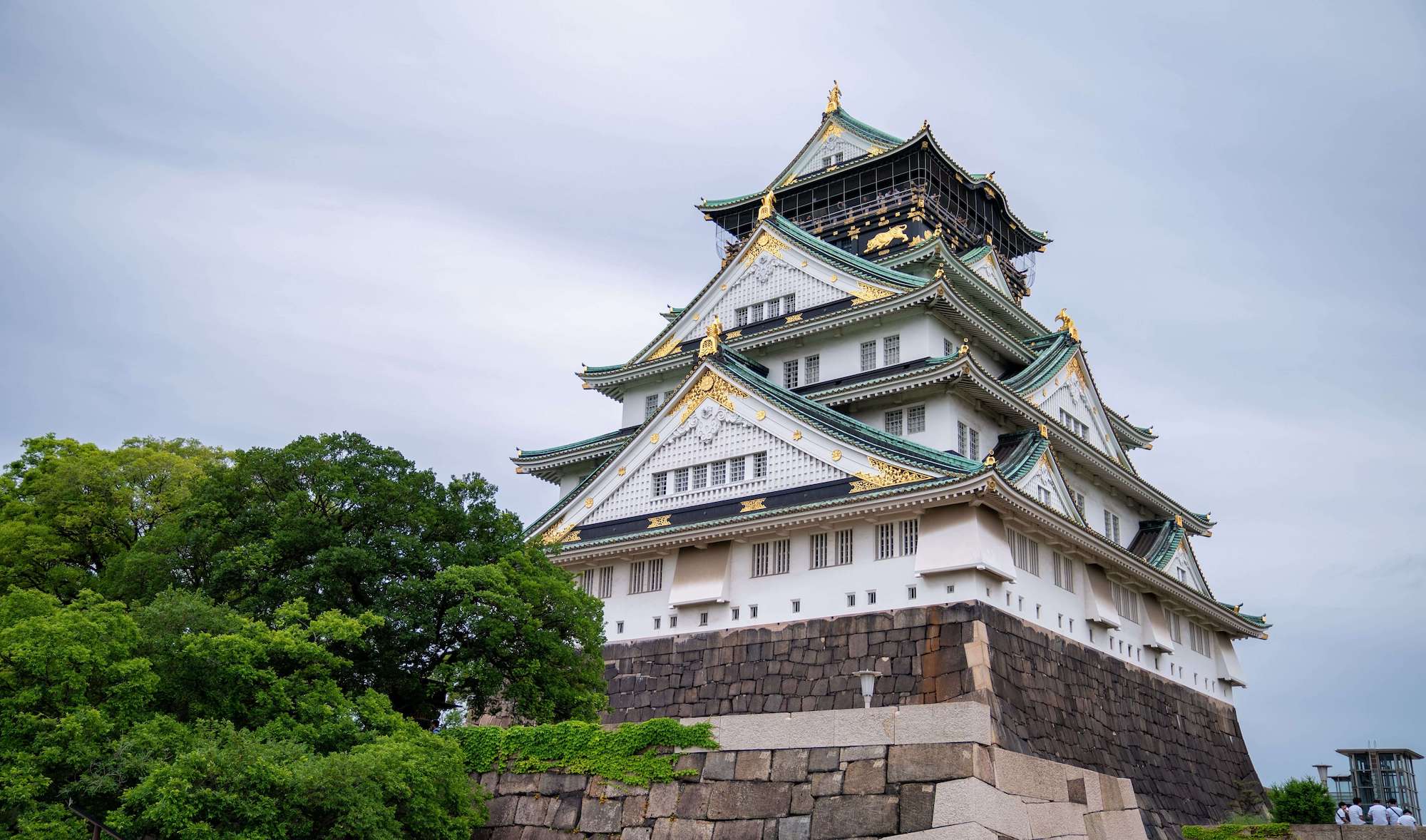 Osaka Castle – first constructed in the late 16th century – is nestled right in the heart of Osaka’s city center among the skyscrapers and rail lines, embodying the juxtaposition of the old and the new for which Japan is famed.
Osaka Castle – first constructed in the late 16th century – is nestled right in the heart of Osaka’s city center among the skyscrapers and rail lines, embodying the juxtaposition of the old and the new for which Japan is famed.
The eight-story high keep, with its lustrous green and gold accents, is an important national symbol, and now contains a well-curated museum depicting the history of the fort and region (complete with holographic video displays).
The one square kilometre expanse of the grounds surrounding the main tower provide some great examples of Japanese flatland castle architecture: extensive open spaces perched above ground level on sloped stone walls – which were intended to absorb the shock of earthquakes – and encircled by a moat.
The grounds inside have been used for several decades as a public park: a popular spot for cherry blossom viewing in spring, with a full calendar of event hosted here throughout the rest of the year.
Edo Castle (Constructed in 1457)
Far and away the most conveniently accessible spot on this list, Edo castle is better know by the palace which it houses: the Imperial Palace of Tokyo, which has been the home of the Japanese royal family for over 150 years. This of course means that certain sections are completely off-limits to the general public.

Credits: Ray / Flickr
However, the sheer size of the grounds (which once reached all the way to Tokyo Station) means that there is plenty still to explore.
A great choice of museums is on offer in the castle park and surrounding area, as well as gorgeous gardens, and wide open spaces on which salarymen from the nearby business districts stretch out to eat their lunch in the warmer months.
Although some of the most important buildings of any castle experience, including the main fort, can’t actually be approached, Edo castle is nonetheless worth a visit simply for its accessibility and significance as the symbolic heart of Japan.
Matsumoto Castle (Constructed in 1594)
Cradled among the natural grandeur of mountainous Nagano prefecture, Matsumoto castle is one of the three top castle destinations in Japan. The broad moat reflects a mirror image of its black-walled keep, which reaches an imposing five stories.
As the bulk of the current structures were built at the end of the 16th century, before the end of the bloody Sengoku period, the authentic original buildings of the ‘Crow Castle’ offer some interesting examples of the ingenuity involved in designing and building a defensively sound stronghold. Take walk up through the main tower to see holes included for dropping rocks on enemies, and creatively places arrow ports.
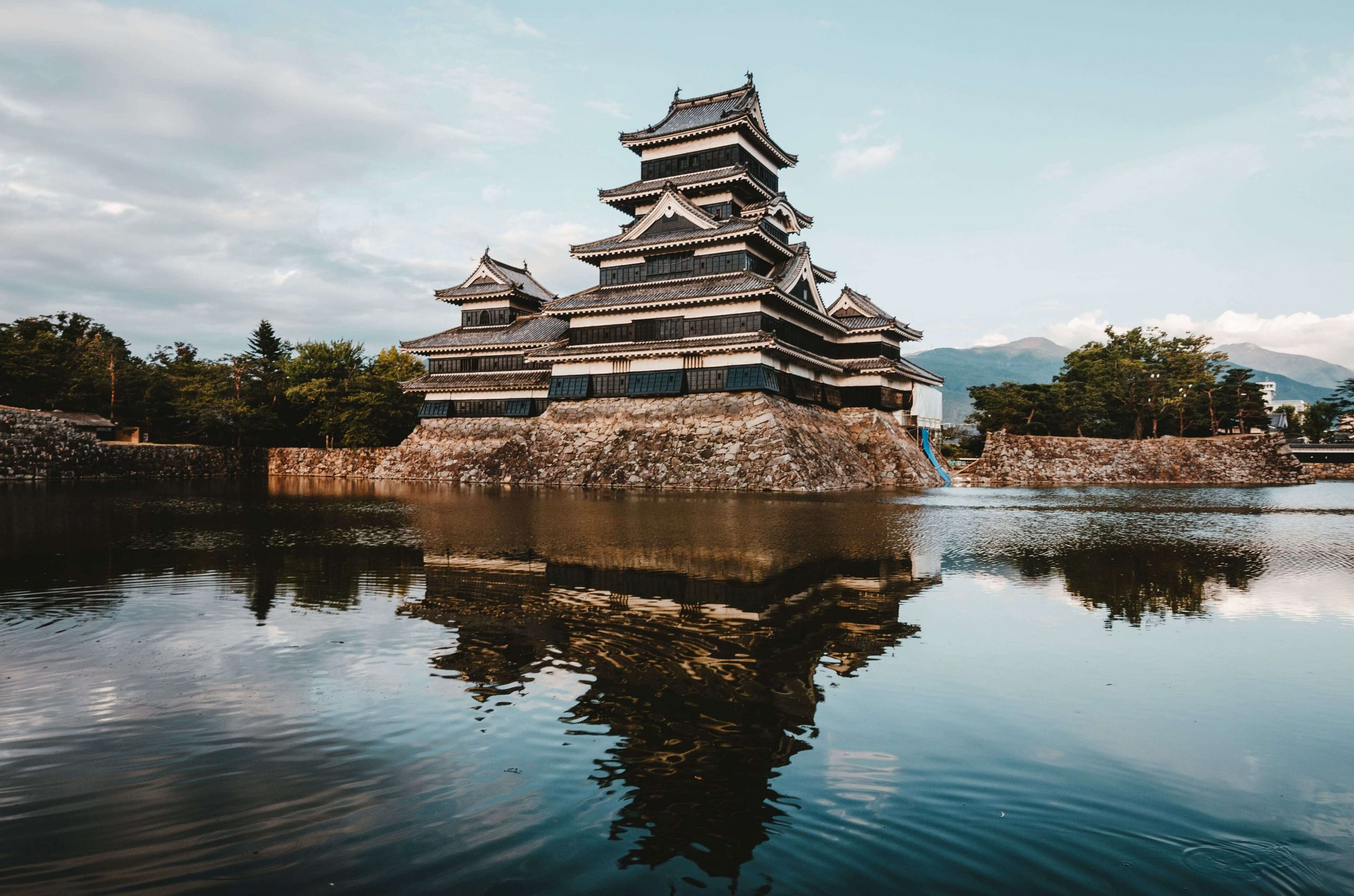 The top floors of this tower also offer some stunning views of the mountains which surround the city. Spring is the most popular time to visit, and offers some truly beautiful photo opportunities. However, the castle really comes into its own in winter, achieving an otherworldly aura as the snows settle on its tiled roof and stacked stone base – in total contrast with the jet black of the walls. The beauty and silence of the scene evokes the samurai movies of Kurosawa.
The top floors of this tower also offer some stunning views of the mountains which surround the city. Spring is the most popular time to visit, and offers some truly beautiful photo opportunities. However, the castle really comes into its own in winter, achieving an otherworldly aura as the snows settle on its tiled roof and stacked stone base – in total contrast with the jet black of the walls. The beauty and silence of the scene evokes the samurai movies of Kurosawa.
Adventurers should consider combining a trip to Matsumoto with a hiking trip in the warmer months, or a visit to Nagano’s world-class ski resorts in winter.
Nijo Castle (Constructed in 1603)
Kyoto, the capital of Japan for over a millennium, remains the nexus of traditional Japanese culture even today. Its significance as a the cultural heart of Japan is evident in its number of temples, and its impressive flatland castle displays its past importance as the seat of political power.
 Nijo castle was built by the shogun Tokugawa Ieyasu at the very start of the Edo period which followed Japan’s two centuries of all-out warfare, and it remained in the hands of his clan until their downfall in 1867.
Nijo castle was built by the shogun Tokugawa Ieyasu at the very start of the Edo period which followed Japan’s two centuries of all-out warfare, and it remained in the hands of his clan until their downfall in 1867.
The palaces inside present some of the best examples of their kind. Ninomaru Palace is open to the public, and boasts an impressive series of tatami-floored living quarters, artistic treasures, and stately reception halls.
Listen out as you walk along the wide floorboards. The squeaking noises they make underfoot aren’t due to poor craftsmanship, in fact these ‘nightingale floors’ were designed to warn residents of any spies or assassins wandering their hallways.
Honmaru Palace – located behind a second ringed wall, and a second moat – is only open on special occasions. However, the gardens of both palaces are open, and they contain a stunning range of plum and cherry blossoms. The impressive variety of the trees means that one part or another of the castle is in bloom from late February until the end of April.
Takeda Castle Ruins (Constructed in 1411)
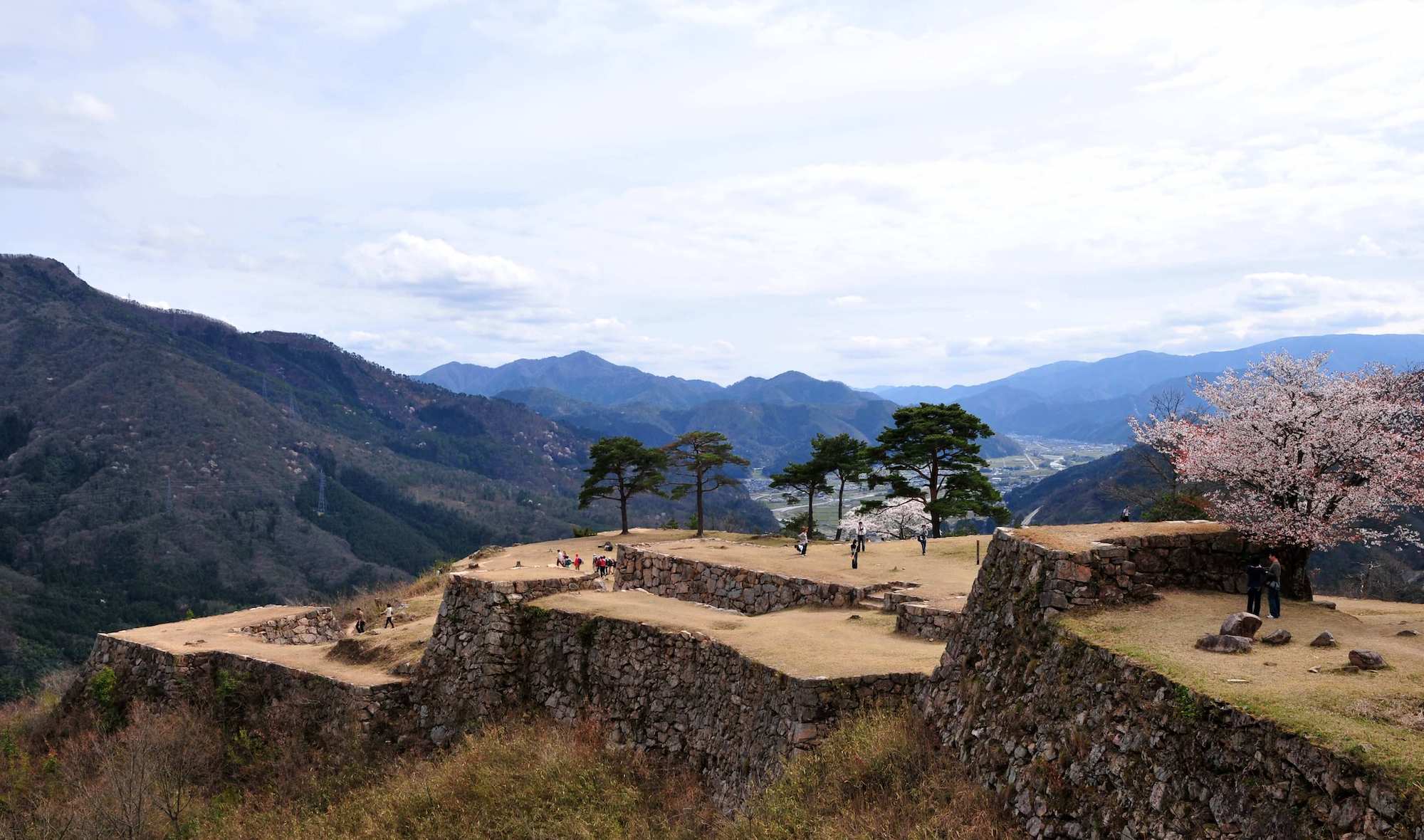
Credits: M.Louis / Flickr
Perched upon a mountaintop in Hyogo prefecture, Takeda castle once stood as an example of the earliest style of Japanese castle: the mountain castle. It was originally constructed in 1411, then subsequently abandoned after a fierce battle at the start of the 17th century. Nowadays only the foundations remain – excavated and restored in the 20th century as a tourist spot.
Although no buildings are left standing, these ruins still offer a great day out for lovers of hiking and nature, with stunning views of the mountains and valleys in the surrounding area.
If visiting in autumn, consider taking an early walk up to Ritsuunkyo, on the slopes of the mountain opposite the castle. Here you’ll discover the reason this fort was once called “the castle floating in the sky” as you see the imposing foundations rising up out of the morning fog.
The relatively remote location of this Takeda Castle means that it’s a little harder to access than the others on the list. Take the Tokaido/Sanyo Shinkansen to Himeji from either Tokyo, Kyoto, or Osaka, then transfer to the JR Bantan Line.
Nagoya Castle (Constructed in 1615)
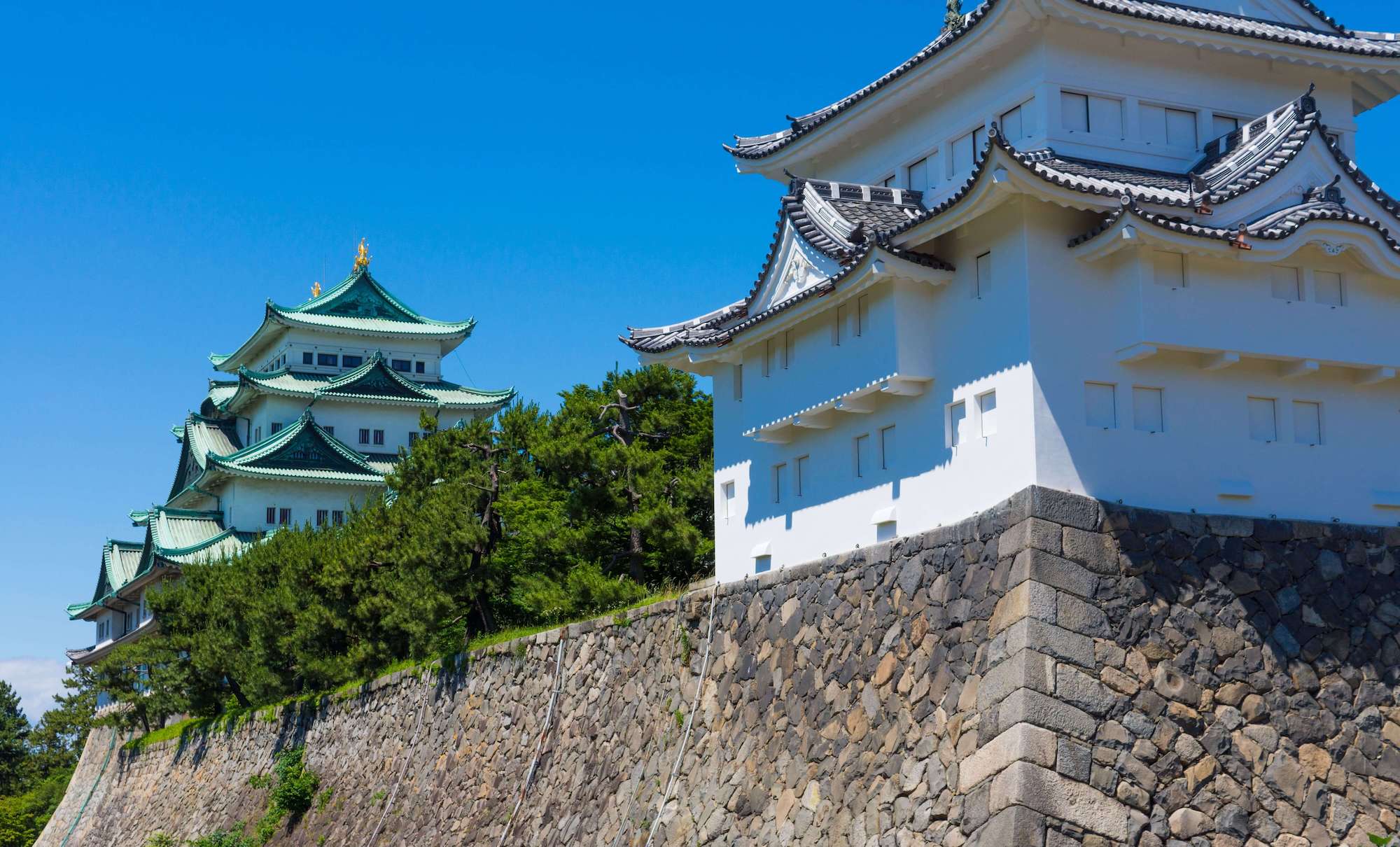
Credits: Tetsuchi Kimura / Flickr
Constructed at the start of the Edo period as the base for a branch of the ruling Tokugawa clan, this is one of the most popular tourist spots in the central city of Nagoya. It served as an important waypoint for the Shogun in his travels to and from the capital.
The main keep houses a museum which outlines the history of the clan, and the feudal period during which it gained dominance. Unfortunately the main keep is currently off-limits due to an ambitious reconstruction project which is scheduled to finish in 2022.
Read also: Best things to do in Nagoya
The palace, however, remains open, and offers some great examples traditional Japanese art and design – including golden sliding doors emblazoned with paintings of natural scenery – which cement its position as a national treasure.
At certain times of the day there are historical re-enactment performances by ‘Nagoya Omotenashi Bushotai’ and ‘Hattori Hanzo Ninja Squad’. These two groups of armour-clad performers will pose for pictures, answer questions about the castle, and even put on acrobatic martial arts shows.
On your way out, take a wander around the Kinshachi Yokocho historical shopping district to grab some souvenirs or sample some authentic Nagoya cuisine.
Hirosaki Castle (Constructed in 1611)
Perched upon the tip of Japan’s mainland, Aomori prefecture probably doesn’t feature on the itineraries of most travellers, who tend to stay within the better-known regions. Visitors who make the journey north are rewarded with great natural beauty, cultural richness, and a unique. Castle experience.

Credits: Dick Lam / Flickr
Hirosaki Castle was constructed in 1611, but sadly burned down about 15 years later after being struck by lighting. The current tower is still over 200 years old, having undergone reconstruction in the 19th century. More recent renovations were completed in 2016, and amazingly the whole keep was relocated in one piece to allow experts to reinforce the foundations.
The greatest draw of this castle, however, is the moat. Visit towards the end of cherry blossom season to see it awash with fallen petals which turn the whole surface pink. For a romantic afternoon (or just a great photo-op), you can rent a rowboat to glide through the surreal scene.
Hikone Castle (Constructed in 1622)
Hikone Castle stands by the shores of Lake Biwa: the source from which the surrounding canal town and its daimyo master gained their wealth. The fort which the Ii clan built in 1622 remains an excellent example of the hilltop style of Japanese castle, and an excellently preserved one at that.
Much of the buildings are in their original condition, including the main keep which is designated as a national treasure. During the Meiji era, many castles were scheduled to be dismantled, but a direct order issued by the emperor himself led to an exemption for Hikone Castle.

Credits: Chris Christensen / Flickr
Once inside, it’s easy to see why. The wooden horse stables are the only surviving example their kind, and the spiral ramp of the approach leading to a wooden bridge – built to be easily destructible so as to to frustrate the advance of any besieging attackers – are great examples of the defensive ingenuity of castle architects.
Also not to be missed is the castle museum, with exhibitions of old palace rooms and a wide collection of various musical, literary, and military treasures accumulated by the clan which once called the castle home.
The lake and canal town itself offer enough to fill a whole day or two of exploration. Consider combining a visit to the castle with a hike in the mountains to the east, a cruise on the lake, or a visit to some of the other amazing sites around the perimeter of Japan’s biggest lake. The area can be easily accessed for a day trip from Osaka, Kyoto, or even Tokyo (with the help of the Shinkansen bullet train).
The Wrap-up – 10 Castles You Should Visit in Japan
So there you have it: the best castles in all of Japan. The unique design of these walled fortresses is enough to set the imagination of any history fan alight. But these sites aren’t just for history buffs – their gorgeous exteriors, serene gardens, and inspiring collections of treasures offer something for every traveller; from Instagram addicts to aspiring Zen masters.
Although Japan’s castles has taken a heavy beating from weather, war, and sheer bad luck, the care and dedication with which the country treats these historic treasures means that it still has one of the best collections in the world. Whatever you do – and however long you’re in Japan – do not pass up the opportunity to visit some of these unique places!
Your Japan is also on Facebook, Instagram, and Pinterest. Follow us and don’t miss our next posts. You can join our growing community on Facebook.

